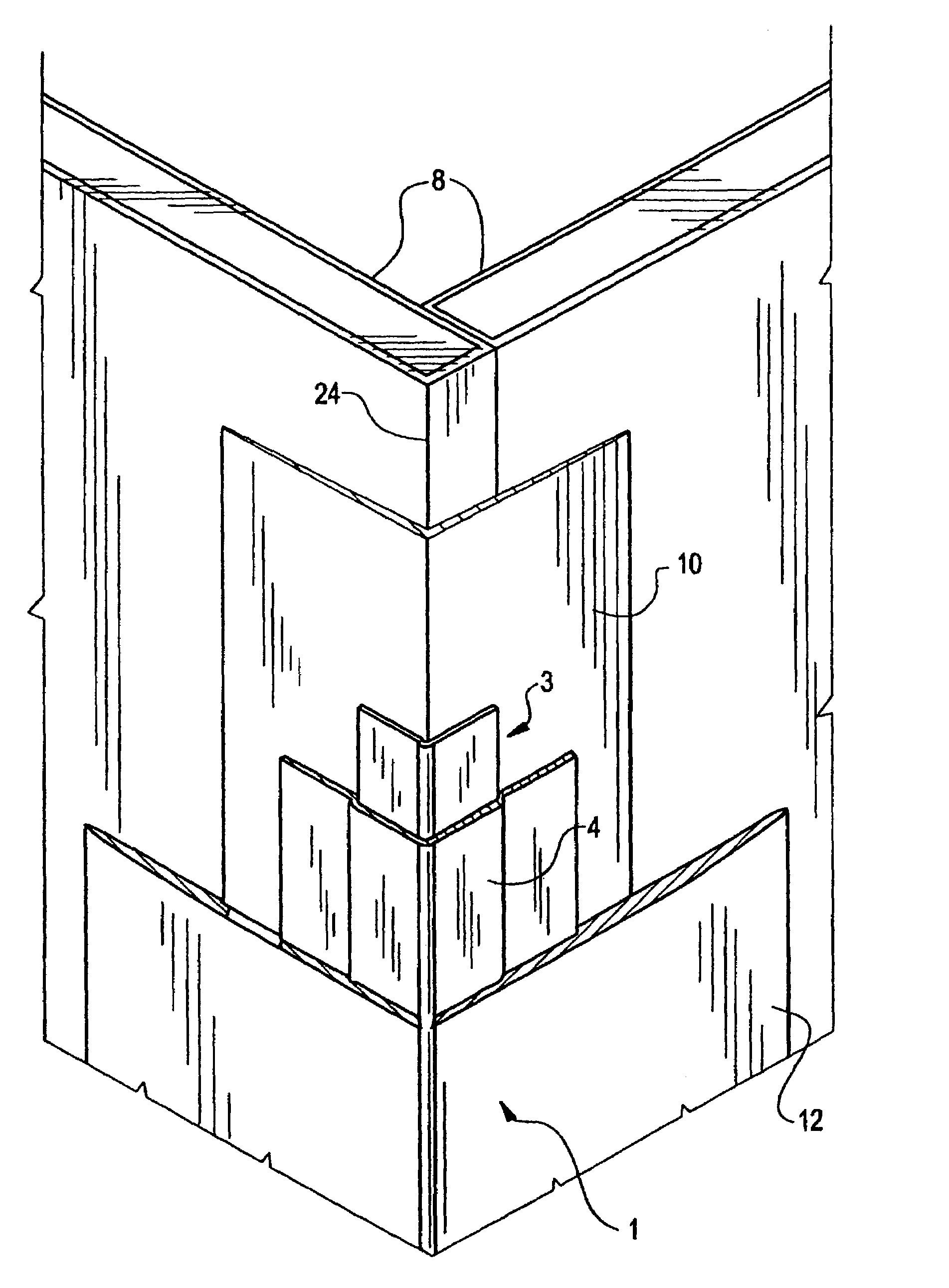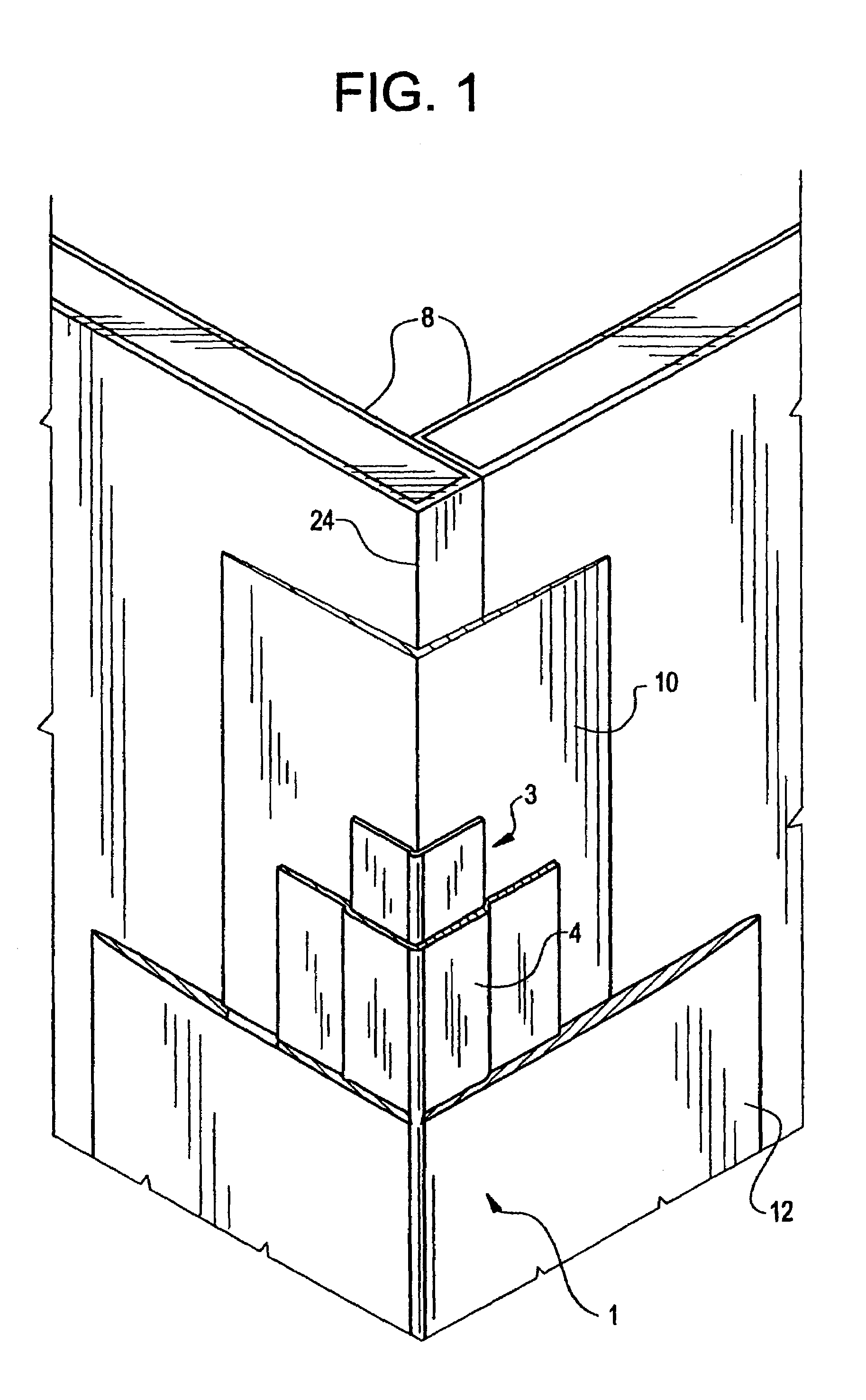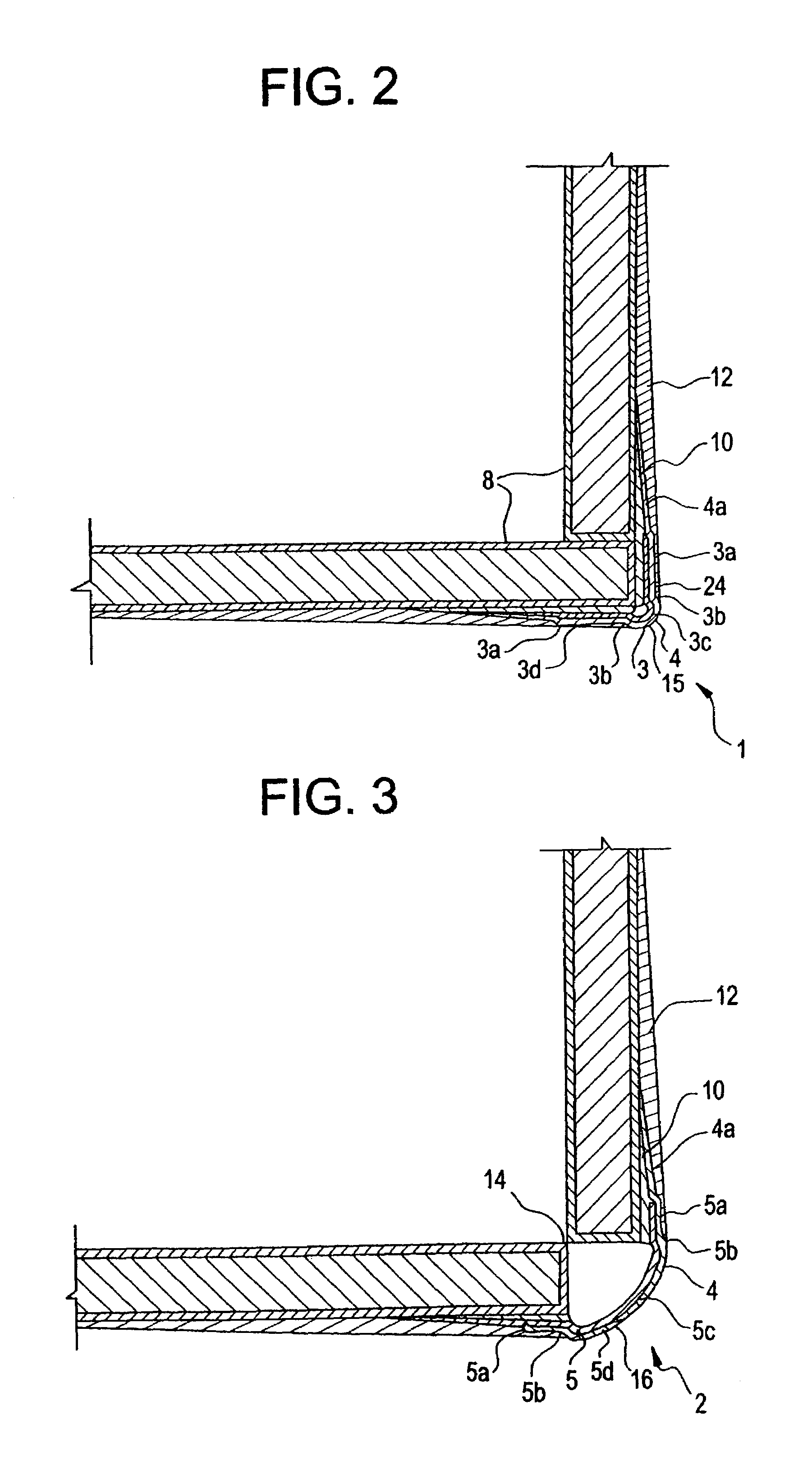Paper and paperbead for protecting drywall corners
a technology of corner beads and paper beads, applied in the field of corner beads of drywall, can solve the problems of affecting the adhesion of joint compounds, and exposing the inner plaster, and causing damage to the exterior or interior, and achieving excellent adhesion. the effect of the joint compound
- Summary
- Abstract
- Description
- Claims
- Application Information
AI Technical Summary
Benefits of technology
Problems solved by technology
Method used
Image
Examples
third embodiment
[0029]the paperbead is the L-shaped paperbead shown in FIG. 4. In this embodiment, the core 7 has a long flange 7a, a short flange 7b, an offset rib 7c, a shoulder 7d positioned between the offset rib 7c and the long flange 7a, and an outer surface 7f. In this embodiment, the long flange 7a is about 1.5 inches to 2 inches long, while the short flange 7b is about 0.75 inches long. The long flange 7a is positioned in this embodiment at no greater than 89 degrees (per ASTM-C1047) to the short flange 7b forming an L-shape. In an exemplary embodiment, the offset rib 7c is about 0.0625 inches high and about 0.125 inches wide.
fourth embodiment
[0030]the paperbead is the J-shaped paperbead 21 shown in FIG. 7. In this embodiment, the core 18 has a long flange 18a, a short flange 18b, and / a center portion 18c positioned between the flanges. The core 18 also has an outer surface 18d. The long flange 18a is typically about 1 inch long. The short flange 18b is typically about ½ inches long. The center portion 18c is typically about ⅜ inches to ⅝ inches wide. An offset rib 18d is also shown in this embodiment as positioned between the center portion 18c and the long flange 18a. However, the offset rib can also be positioned between the center portion 18c and the short flange 18b, positioned between the center portion 18c and the short flange 18b and the long flange 18a, or excluded all together. In an exemplary embodiment, the center rib 18d is about 0.0625 inches high and about 0.125 inches wide.
fifth embodiment
[0031]the paperbead is the shadow-mold paperbead 22 shown in FIG. 9. In this embodiment, the core 19 has a first flange 19a, a second flange 19d, a center portion 19b, and an offset rib 19c. The core 19 also has an outer surface 19e. The first flange 19a extends from the offset rib 19c forming an angle of about 90.degree. The center portion 19b is positioned between the offset rib 19c and the second flange 19d. The second flange 19d extends from the center portion 19b at an angle of about 90.degree. in a direction opposite from the first flange 19a. In an exemplary embodiment, the flanges 19a and 19d are generally about ⅜ inches to 1 inch in length, but are not necessarily of equal length. The center portion 19b is about ⅜ inches to 1 inch in width.
PUM
| Property | Measurement | Unit |
|---|---|---|
| thick | aaaaa | aaaaa |
| sizes | aaaaa | aaaaa |
| sizes | aaaaa | aaaaa |
Abstract
Description
Claims
Application Information
 Login to View More
Login to View More - R&D
- Intellectual Property
- Life Sciences
- Materials
- Tech Scout
- Unparalleled Data Quality
- Higher Quality Content
- 60% Fewer Hallucinations
Browse by: Latest US Patents, China's latest patents, Technical Efficacy Thesaurus, Application Domain, Technology Topic, Popular Technical Reports.
© 2025 PatSnap. All rights reserved.Legal|Privacy policy|Modern Slavery Act Transparency Statement|Sitemap|About US| Contact US: help@patsnap.com



